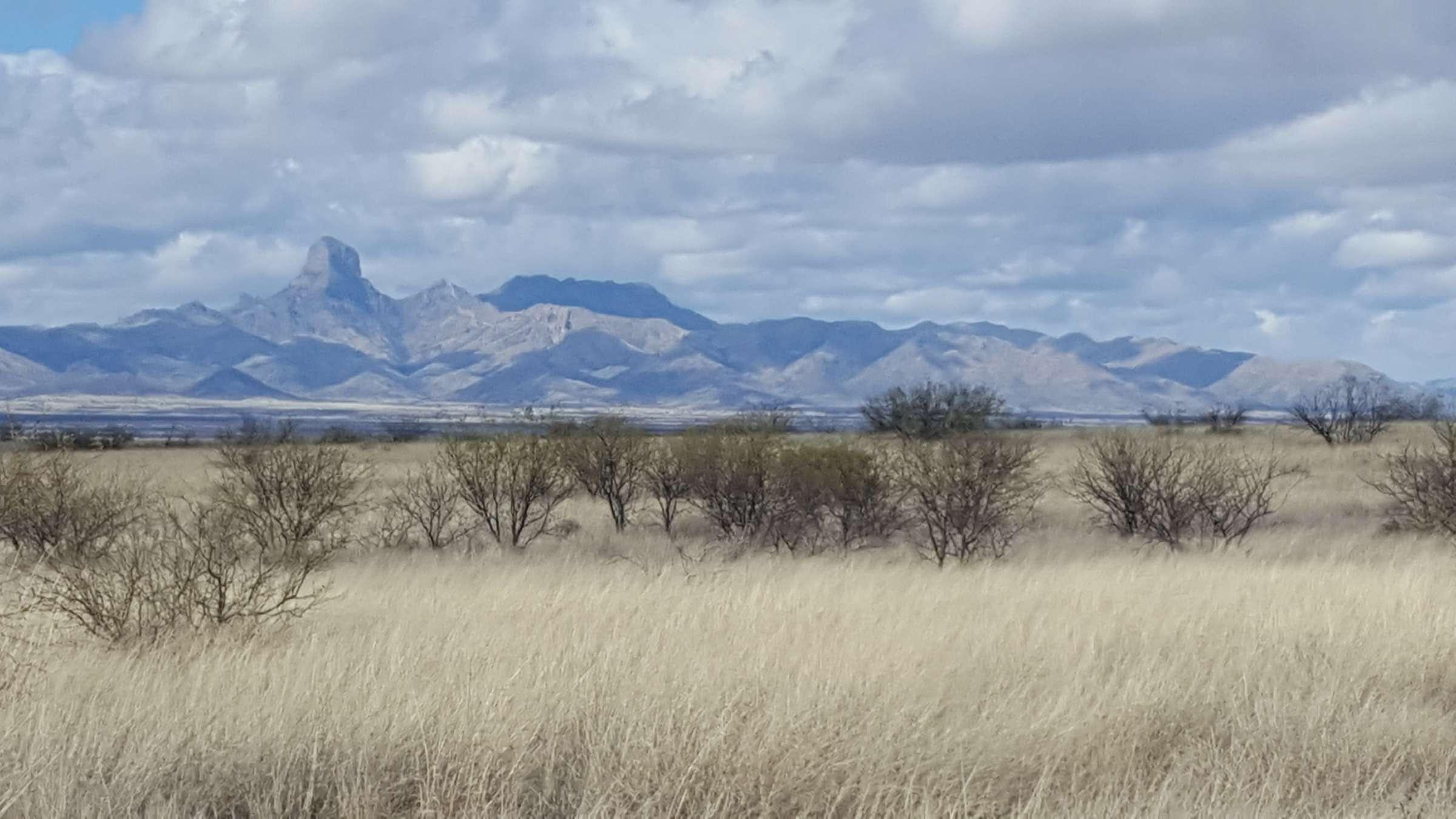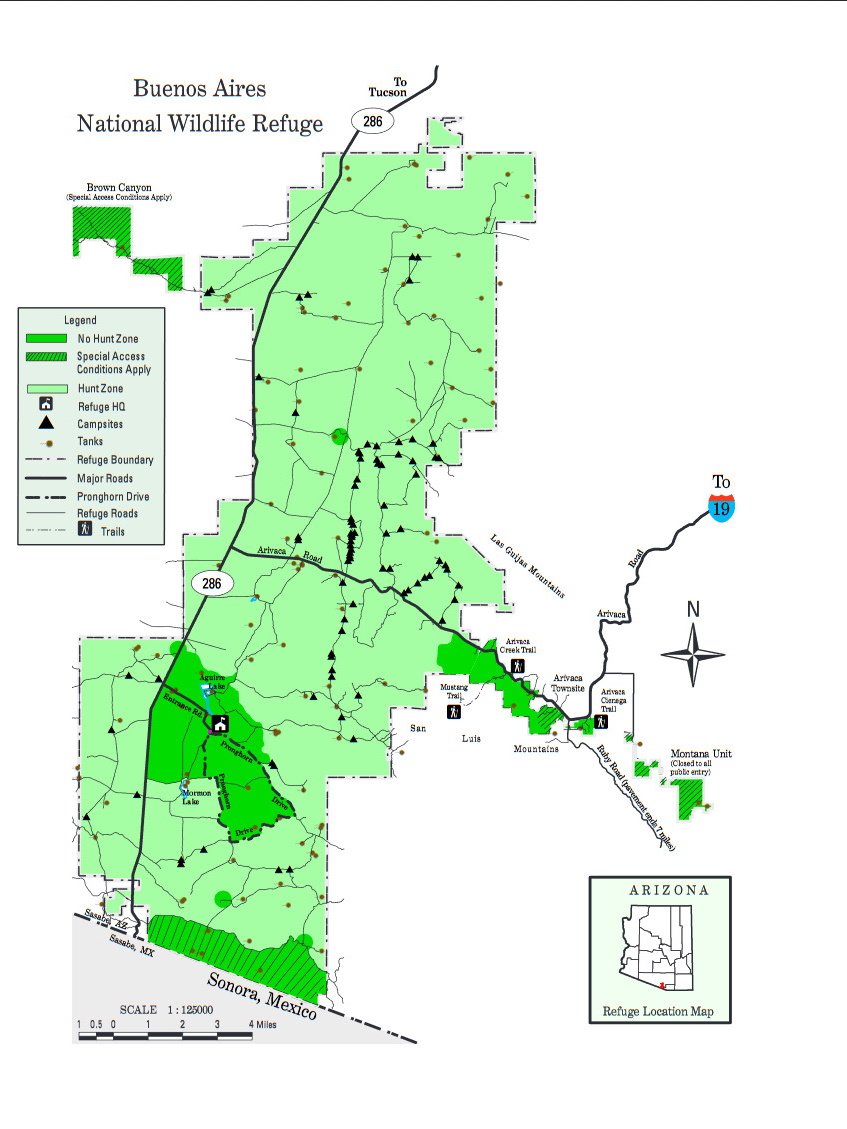Buenos Aires NWR (please consider using more specific locations)

Buenos Aires NWR (please consider using more specific locations)
Sasabe, Arizona 85633
Buenos Aires National Wildlife Refuge Official WebsiteBuenos Aires National Wildlife Refuge map
Buenos Aires National Wildlife Refuge Trails
Tips for Birding
Ten location-specific hotspots may be found within Buenos Aires National Wildlife Refuge. If you begin your list while driving in to the Refuge headquarters on the entrance road, the first hotspot eBird may suggest will likely be Aguirre Lake or Triangle Pond. Listing for such specific hotspots is encouraged, but only of the birds you observe at each discrete location. Use the greater Refuge hotspot when you have a checklist that includes multiple locations, or for birds seen away from discrete hotspots on the Refuge.
Due to the weakness of cellular service in parts of the Refuge, birders may want to prepare in advance for identification challenges of Mallard vs Mexican Duck, Blue-gray vs Black-tailed Gnatcatcher, Common vs Chihuahuan Raven, and Western vs Chihuahuan Meadowlark, all of which have been recorded on Refuge.
Birds of Interest
The endangered Southwest Willow Flycatcher has been recorded here during May, as well as August and September.
The threatened Yellow-billed Cuckoo has been observed during June-August.
Bell’s Vireo, a threatened species in New Mexico, with an endangered subspecies in California, appears on lists from early April into early October.
A Streaked-backed Oriole, rare in the US, was documented at Arivaca Cienega in December 2023.
3 Roseate Spoonbill, uncommon in Arizona, were photographed at Aguirre Lake in August 2021.
Rufous-winged Sparrow, a USFWS-designated Bird of Conservation Concern for the Sonoran Desert Region, is present all year.
Winter sparrows include Chipping, Clay-colored, Brewer’s, Black-throated, Lark, White-crowned, White-throated, Savannah, and Lincoln’s.
Winter (October-April) raptors include Golden Eagle, Northern Harrier, Sharp-shinned Hawk, Peregrine Falcon, Merlin, Crested Caracara, Great Horned Owl, and Long-eared Owl.
A few species of winter waterfowl are present November-March.
Spring brings additional sparrow species, notably Botteri’s and Cassin’s, along with flycatchers – such as Vermillion, Dusky-capped, Ash-throated, and Brown-Crested, all of which linger through August and sometimes into September.
Three Birds of Conservation Concern -- Calliope, Rufous, and Broad-tailed Hummingbird – pass through the Refuge March/April in spring migration, as does Costa’s Hummingbird.
Some warbler and vireo species come through the Refuge briefly in spring migration. Notable among these are Virginia’s Warbler, Black-throated Gray Warbler, and Plumbeous Vireo, all Birds of Conservation Concern. Lucy’s and Yellow Warbler, along with Bell’s Vireo, also arrive in March/April, but stay through summer.
Summering raptors, including Common Blackhawk, Gray, Hawk, Swainson’s Hawk, Zone-tailed Hawk, Elf Owl, Black Vulture, and Turkey Vulture, begin arriving in April, remaining into September.
Black-chinned, Broad-billed, and Anna’s Hummingbird keep a similar schedule.
A few waterfowl – notably Black-bellied Whistling Duck and Wood Duck – also show up in April, staying as late as August.
Waders – including Bird Species of Conservation Concern American Avocet, willet, Lesser Yellowlegs, and Pectoral Sandpiper – may be found in wetlands August and September.
August and September sees return migration of hummingbirds, warblers, vireos.
Other species, such as Hammond’s, Gray, and Dusky Flycatcher begin arriving in August to spend fall and winter on the Refuge.
About this Location
The Refuge features at least three distinct biomes:
- - Sonoran semi-desert grassland (the majority of the Refuge);
- - sycamore and live oak mountain woodland (Brown Canyon); and
- - desert wetland (Arivaca Cienega).
A particular bird species may be found within all three biomes -- some species inhabiting all three at the same time of the year and other species frequenting each biome but at different times of the year. Other species may be found in only a single biome.
About Buenos Aires National Wildlife Refuge
See all hotspots at Buenos Aires National Wildlife Refuge
Located in southern Arizona, Buenos Aires National Wildlife Refuge was established for the reintroduction of masked bobwhite quail and to restore the natural landscapes and native wildlife that depend upon it.
Spanning the 117,464-acre refuge are several distinct groups of plants and animals that are dependent on each other, also known as biotic communities. Visitors will enjoy the semi-desert grasslands that blend into the cottonwoods and willow that line river banks and wetlands within the refuge. Settled in amongst the grasslands and wetlands is a beautiful sycamore-shaded canyon of extraordinary diversity. Brown Canyon is home to 200-million-year-old volcanic rocks that support a distinct variety of plants and animals that have evolved within this amazing sky island ecosystem.
Established in 1985, the refuge was purchased under the authority of the Endangered Species Act. Open to the public, visitors can enjoy wildlife watching and photography, hunting, fishing, wildlife photography, and special wildlife-related events. It is one of more than 550 refuges that comprise the National Wildlife Refuge System, a national network of public lands and waters set aside for the benefit of wildlife and you!
Notable Trails
The Buenos Aires National Wildlife Refuge website has descriptions of trails ranging in length from 1.25 to 10 miles on the Refuge.
Features
Restrooms on site
Roadside viewing
Entrance fee
Content from Buenos Aires National Wildlife Refuge Official Website and John Montgomery
Last updated January 14, 2024
